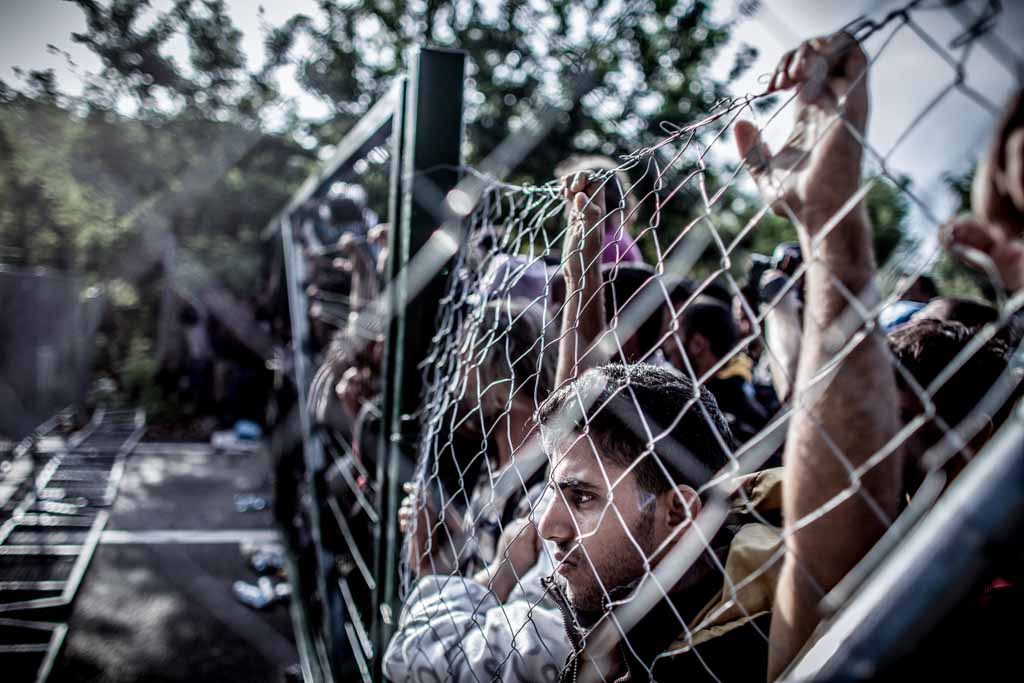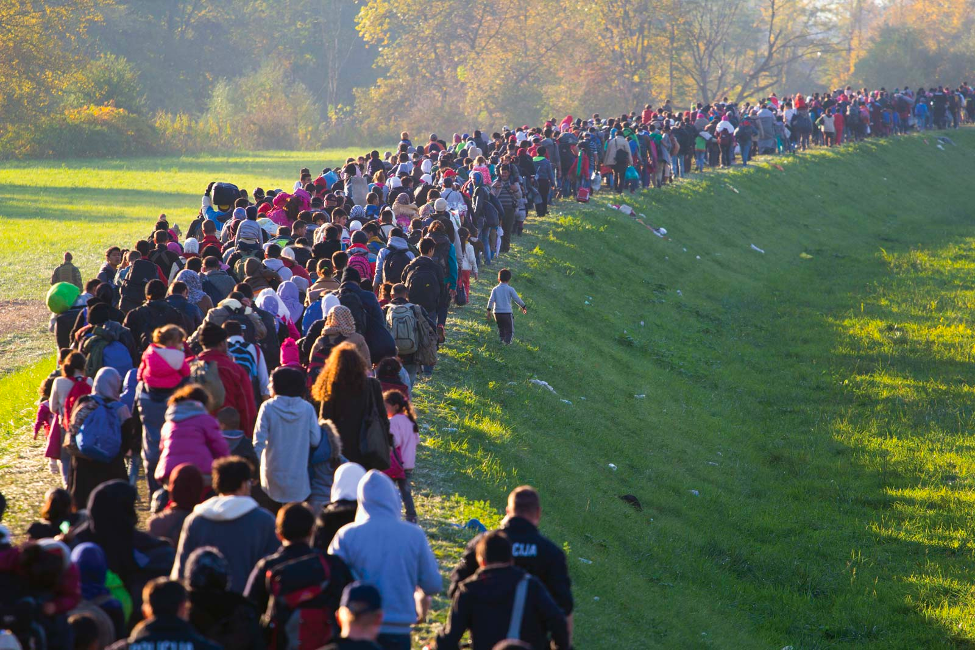By: Arslan Sheikh, Esther Brito Ruiz and Reka Szabo.

Human security is conditioned by a variety of external factors - like war or famine - and personal characteristics - such as gender, ethnic identity, or sexuality. These intersecting realities lead to rapidly evolving patterns of threats to human dignity across the globe. Indeed, humanitarian crises or large scale natural disasters serve to reconfigure the lives of those affected and exacerbate already existing social vulnerabilities. In this line, it becomes important to explore how recent political and social developments have notably worsened the conditions of one particular collective of people: migrants.
Recent estimates suggest that over 281 million people are migrants - amounting to about 3.6 % of the global population. Yet in spite of the significant increases in people flows across national boundaries, migrant groups continue to be politically, socially, and economically targeted and discriminated against. Migrant communities routinely face difficulties in accessing basic services and often see their identities become instrumentalized for political propaganda. As those seeking refuge, fleeing violence, or attempting to find a better future are confronted with rising political polarisation, stricter border control, and worsening social protections. We must reflect on the barriers to movement that affect this collective and the trends that have come to act as drivers of migration flows. Only then can we understand the severity of the conditions migrants face today.
Trends
Economic trends are significant drivers of migration today. Economic divergence has been growing between countries, highly impacted by the global recession caused by the COVID-19 pandemic. Available instruments of developing economies aiming at tackling such challenges are much more limited than the ones of advanced economies, which leads to a bifurcated economic recovery. Another longer lasting global challenge to be faced is climate change. Similarly to the pandemic, it impacts countries unevenly: some are going to be more resilient thanks to their more fortunate economic situation and/or geographical location than others.
Adaptation to climate-related changes are going to have socio-economic consequences for individuals. Unskilled workers, for instance, are going to be vulnerable to industrial transformations — for instance, in carbon-intensive, heavy industries—, and may decide to migrate to countries in which their skills can still be used, in the hope of opportunities of economic advancement.
Climate change and countries’ various responses to it can cause not solely voluntary economic migration in the future, but also large-scale involuntary migration. This falls into the category of societal global risk, influencing numerous countries and industries negatively. Climate action failure is one of the potentially damaging risks that are going to contribute to involuntary migration on a global scale. Extreme weather, biodiversity loss, livelihood crises, and social cohesion erosion are also listed by the latest Global Risks Report of the World Economic Forum. Climate action failure and extreme weather are the most influential factors.
Climate change contributes to natural disasters, too. Because of such disasters, internal and cross-border displacement is going to occur. Interestingly, it is not necessarily the direct effects of such disasters that are going to affect migration, but the worsening economic conditions they will cause. This means that links between migration and disasters caused by the accelerating climate change are rather indirect, manifesting in migration caused by decreasing incomes, worsening livelihood opportunities, and changes in food security.
Violence, conflict and persecution are still going to play a role in the future when it comes to migration or displacement, however, data on recent trends indicate that disaster related internal displacement is more common, and, at the same time, more volatile than internal displacement related to the previously mentioned factors.
Another factor to take into account when observing voluntary or involuntary migration, is the lack of possibility to migrate, caused by environmental change. People without assets to move can be trapped in certain areas, which can lead to more defenselessness against environmental change. Meanwhile, these trends are further creating many barriers to migration which need to be addressed simultaneously.

Contemporary barriers to Migration
The barriers to migration are very complex, interlinked, and multifold. The recent Global Risks Report 2022 by World Economic Forum has identified several contemporary barriers to migration which include national level barriers, such as the movement restrictions related to the COVID-19, financial pressures in advanced economies, and greater focus on domestic priorities. The report has also identified three potential barriers to the cross-border migration; which include post-pandemic effects on international mobility, future employment trends, and increased national interest postures of several countries.
Movement restrictions because of the COVID-19 have interrupted several migration flows. These restrictions are temporary, but as the post-pandemic economic rebound demands more labour, creating further opportunities for migrants, Western policymakers need to be prepared to address a new influx of migrants and be able to explain to their residents why welcoming this labour force would not diminish their employment opportunities, as well as why certain post-pandemic employment opportunities would need a migrant labour force to fulfil them. Failure to do so may cause further rise in anti-immigrant sentiments in resident populations.
National interest postures are increasingly becoming a world-wide phenomena where nations are actively reframing their migration policies to exclude migrants from basic financial and healthcare services, as Chile and Peru have done recently. Another such example are the restrictive policies of the United Kingdom and USA, which originally were implemented because of public health concerns, but have sustained and are causing a decline in the issuance of visas to migrants.
Apart from these issues, the nature of public discourse and disinformation campaigns are making the migration issue worse. Migration has increasingly become a controversial issue in Western countries, generating right-wing and nationalist reactions. The media has played a very important role in this by ‘normalizing discriminatory labels used to describe migrants’, whereas disinformation campaigns against migrants portray them as a threat to public health, security, and the economy of host countries are fuelling hate speech and violence against them. These two issues make a crucial impact on the voting behaviours of host countries and the governments they choose to elect, who usually have an anti-migrant stance when framing and implementing the migration policies in their respective countries.
Conclusion
The worsening socio-economic conditions and global trends we have explored have served to notably increase the risks migrants face. Whether it be to emergency displacements, worsening social retribution, or economic push and pull factors, migration is not only becoming a more pronounced phenomenon, but one subject to expanding threats to human dignity.
As the world reopens its borders and struggles to manage the after-effects of a global pandemic, policy and assistance efforts need to look towards the plight migrants face and provide the resources, social networks, and institutional support necessary to protect the human security of one of the world's most politicised collectives.
No comments.